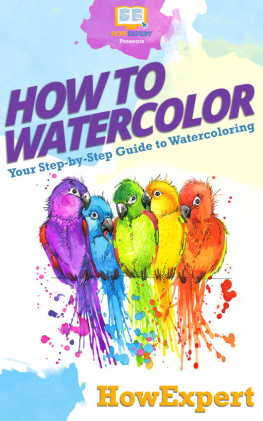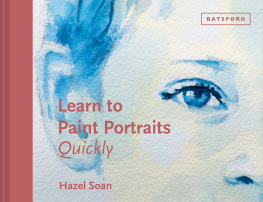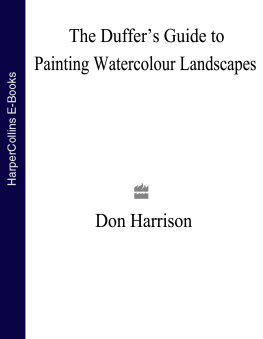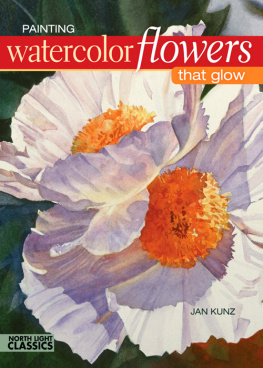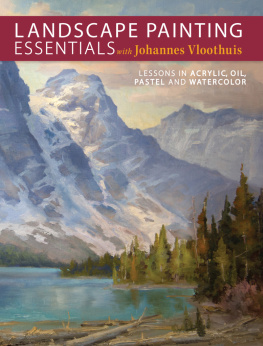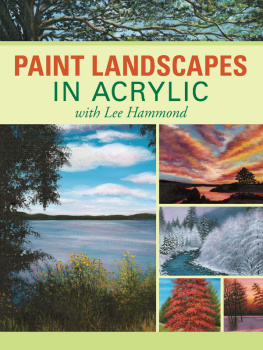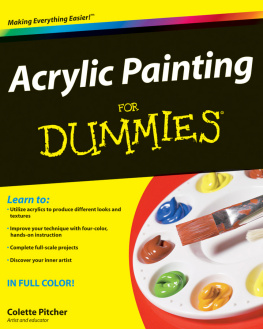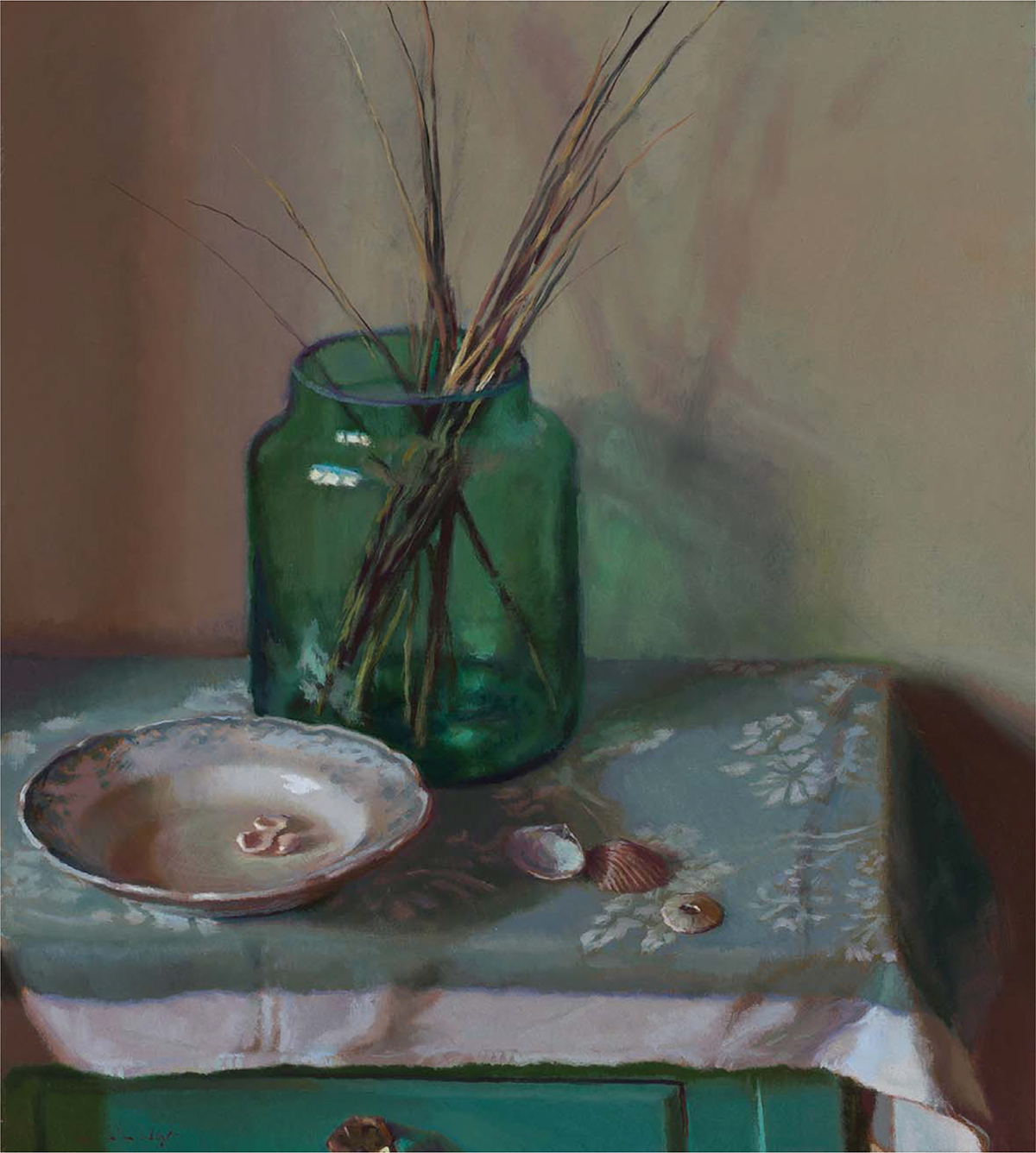This book is dedicated to Nelson Shanks, my mentor, teacher and friend. He taught me everything I know about painting. His encouragement and confidence were immeasurably valuable. Above all, Nelson taught me to explore, push the boundaries, find my own voice and make it joyful.
To my colleagues and dear friends.
To my familyDick, Tara, David and Nate.
And to my mother, who put down her brush and encouraged me to pick up mine.
Materials
SURFACE
stretched canvas
OIL PIGMENTS
Magenta
Permanent Rose or Quinacridone Red
Alizarin Crimson
Cadmium Red Deep
Cadmium Red Medium or Cadmium Scarlet
Cadmium Orange
Cadmium Yellow Light or Lemon
Yellow Ochre
Indian Yellow
Cadmium Green Light
Viridian
Phthalo Green
Cerulean Blue
Ultramarine Blue
Dioxazine Purple
Cobalt Violet Deep
Burnt Sienna
Black
Titanium White
BRUSHES
Silver Brush #5001 hake flat or mop brush
Silver Brush #7110 sable cats tongue sizes 4, 6 and 8
Silver Brush #1034 long bristle filbert sizes 2, 3, 4 and 6
Silver Brush #1003 extra-long bristle filbert size 6
Rosemary brush #278 size 2, 4 and 6
OTHER
nitrile or vinyl gloves
odorless mineral spirits or Gamsol
paper towels
stand oil
spray Retouch varnish
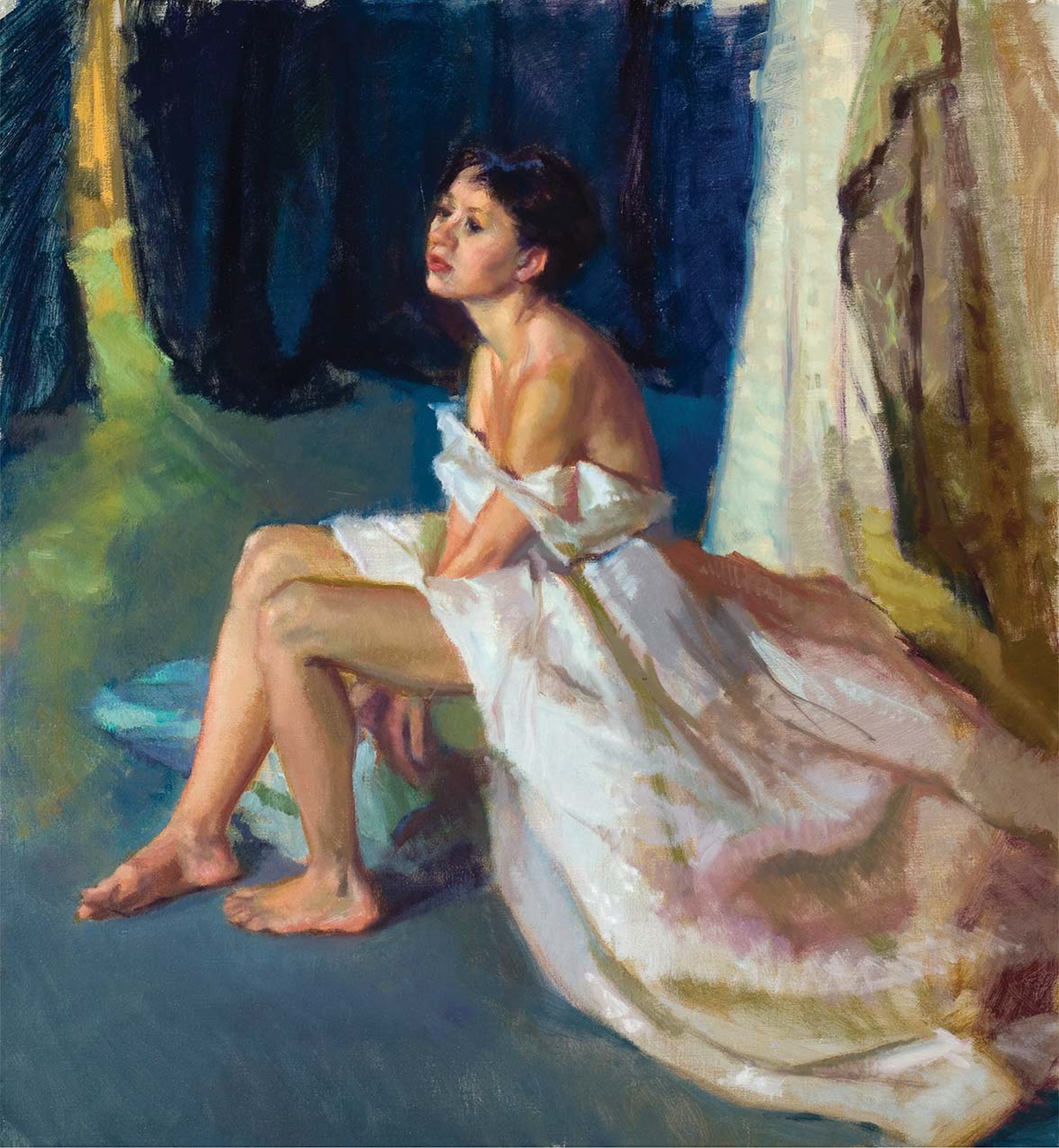
Dress Fitting
Lea Colie Wight
Oil on linen
20" 18" (51cm 41cm)
INTRODUCTION
Nearly all of us are born with the tools necessary to become artists. Some of us can even become great ones. We often take these tools for granted, even though we use them every day.
Youve probably heard people say, I cant even draw a straight line! Well not only are the majority of us indeed capable of drawing a straight line, we also have the ability to compare the length of lines, their relative thickness and the degree of angles. We know whether a door is wide enough, or if it would be a tight squeeze to fit through. We can see the difference in proportion and shape between an oval ball and a round ball. We can tell what is in shadow and what is in light. We can see that the color of the sky at midday is different than its color at sunset.
This instinctive awareness of relative values, colors, shapes and proportions is one of the greatest tools at your disposal as an artist. Work hard to develop it, and your confidence and artistic ability will continue to grow. The lessons and exercises covered in this book will help you identify and build on the skills you already possess, while laying a solid foundation for the fundamental techniques necessary to create a successful painting, regardless of the subject or medium.
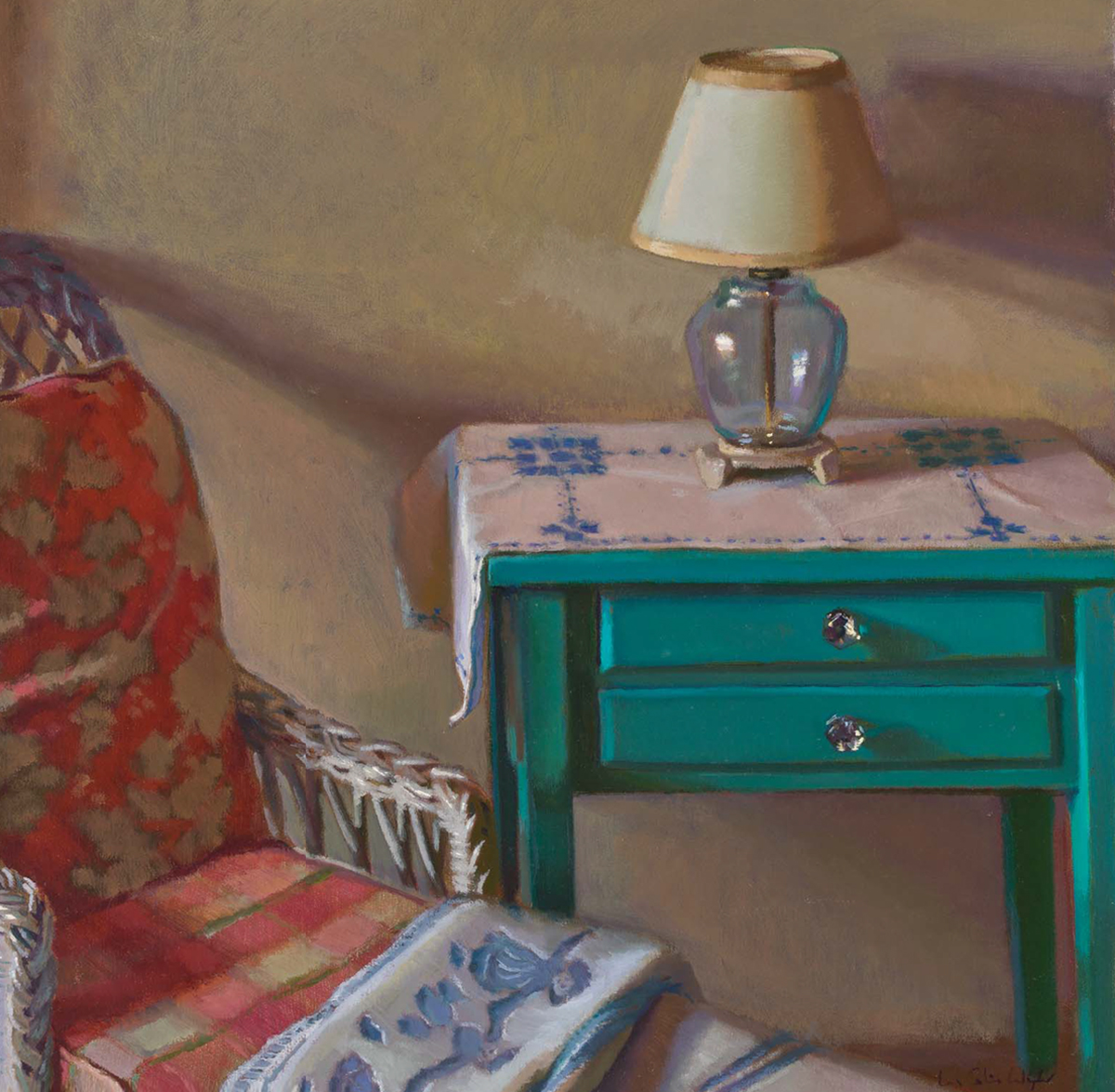
Stillness
Lea Colie Wight
Oil on linen
20" 18" (51cm 41cm)
MATERIALS
If youre just beginning your artistic journey, the following information will outline the basic supplies youll need to get started. If youve been painting for years, perhaps youll find some new materials to explore.
PAINTS
There are various brands and qualities of oil paints available at many different price points. Brands like Vasari, Rublev and Michael Harding stand apart because they are handmade and provide intense pigmentation and consistency. Winsor & Newton and Gamblins professional paint cost a bit less and are good brands.
I recommend sticking with professional-grade paints regardless of which brand you choose. Anything labeled as student or economy grade will be full of filler and consequently weak. Youll have to use a lot more paint to get good coverage and will end up going through your tubes much faster. It has been my experience that using the very best paint you can afford is actually more economical in the long run.
BRUSHES
There are many brush types, shapes and sizes to choose from. Oil brushes are traditionally long handled. My favorites are Silver Brush natural hog bristle filbert brushes in various lengths and sizes. I use filberts because I prefer to use the side of the brush and can lay in paint either broadly or in a line. Other brushes I regularly use are Silver Brush cats tongue sables in various sizes, a Silver Brush 7100 Renaissance and a Rosemary & Co. Series 278 long filbert (for later stages of painting).
Clean your brushes at the end of each painting day, and be sure to let your brushes dry with the ferrule pointed down to prevent paint build up. Mineral spirits and paint thinner can both be used for cleaning brushes. I use The Masters Brush Cleaner and Preserver by General Pencil Company.
SOLVENTS
Turpentine is a traditional solvent. Like most solvents, its toxic and emits a strong odor. Always use an air purifying unit, even when working with odorless solvents. Gamsol by Gamblin is a good non-toxic alternative.
MEDIUMS
Mediums are used primarily to change the consistency of oil paint. Stand oil is my medium of choice. It can also be used for oiling out in the painting process. This involves applying a thin layer of oil film to the dry canvas to bring the colors to a fully saturated look.
VARNISH
Retouch varnish is used as a temporary overall varnish once a painting is dry. A final coat of permanent varnish should not be applied for several months. If you paint very thickly with a lot of medium, even more time is advised before the final coat. Retouch varnish can also be used as a substitute to oiling out, but it may leave freckles of varnish. If this happens, brush them out.
SURFACES AND SUPPORTS
Stretched linen, stretched canvas and Gessobord all lend themselves well to oil painting. Many artists, myself included, like to work on a middle-tone surface because you can see light and dark values in the first notes.
EASELS
There are studio easels in all price ranges and to suit all needs. I have a David Sorg counterweight easel as well as a simple wooden single-staff easel. For landscape painting, I use a portable French easel. Keep your preference of canvas size in mind and make sure your easel will accommodate.
Tip
Viva Strong & Soft paper towels work best for wiping your brushes during painting. They are the most like cottonthick, absorbent and leave very little lint. Be careful though, Viva Vantage paper towels do not have the same qualities. Blue Shop Towels by Scott work great, too. In my opinion, the best thing to use for wiping brushes are cotton paint rags because they are reusable. I cut up old T-shirts for this purpose.



